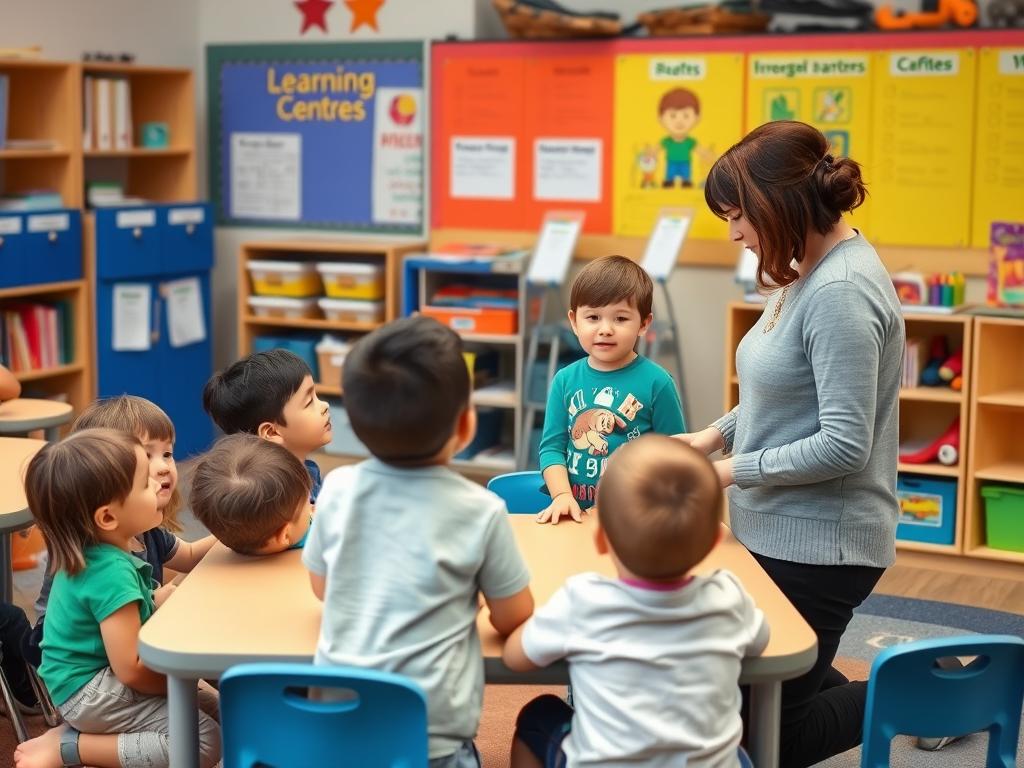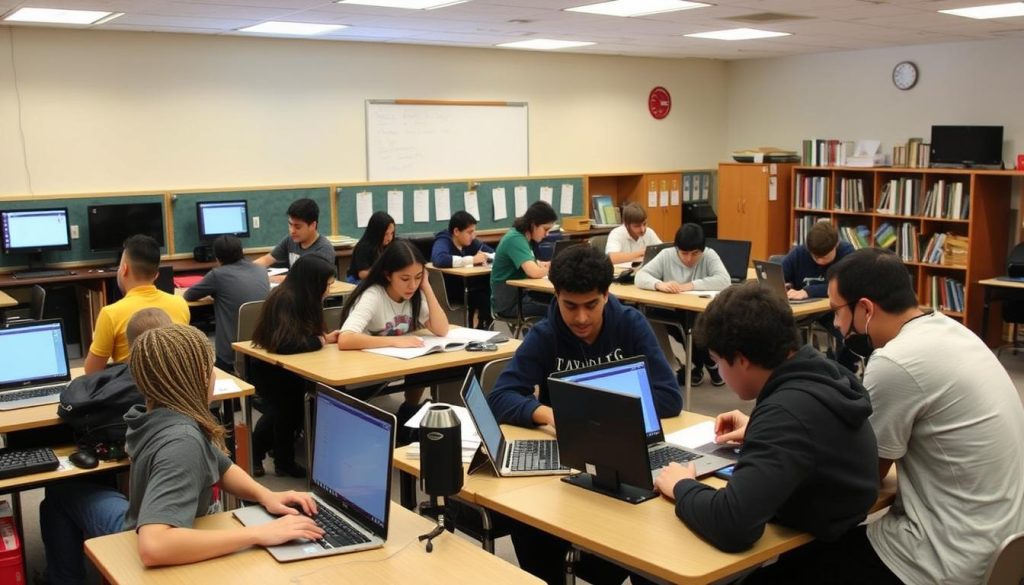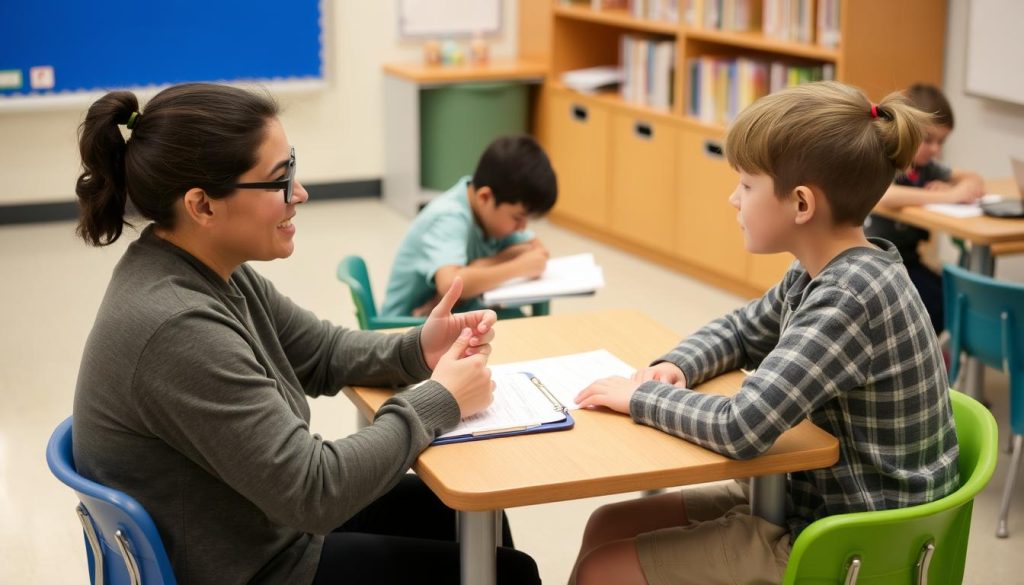Why Meaningful Choices for Students Transform Learning
The research is clear: student choice positively impacts almost every aspect of learning. When students have agency in their education, they demonstrate increased motivation, engagement, and academic achievement. According to a study published in the British Journal of Educational Psychology, students who feel autonomous in their learning show significantly higher engagement levels.
Students demonstrate higher engagement when given meaningful choices in their learning path.
But not all choices are created equal. Psychologists Idit Katz and Avi Assor found that for choice to be effective, it must foster three key feelings in students:
Autonomy
Students need to see the value or relevance of their choices. When options align with their interests and goals, they feel a sense of meaningful autonomy rather than just going through the motions of choosing.
Competence
Students must feel capable of succeeding with their chosen tasks. This means providing appropriately challenging options and ensuring students have the skills needed to make good decisions.
Relatedness
Choices should support students’ sense of belonging and connection to others. This means considering how individual choices might impact group dynamics and relationships.
Developing the teacher skills to create these conditions is essential for implementing meaningful choices for students effectively. Teachers who master these skills report not only increased student engagement but also fewer behavioral issues and higher academic achievement.
Enhance Your Teacher Skills
Looking to develop the expertise needed to implement meaningful student choice in your classroom? Explore our comprehensive professional development resources.
Implementing Meaningful Choices for Students in Your Classroom
Moving from theory to practice requires specific teacher skills and thoughtful planning. Here are practical strategies for implementing meaningful choices for students at different grade levels.
Early Elementary (K-2)
Young children benefit tremendously from choice, even though they need more structure than older students. Building choice into your classroom helps develop self-regulation and decision-making skills early.

- Voting opportunities: Start with simple choices like selecting between two read-aloud books or deciding on a class activity. This introduces decision-making in a low-stakes environment.
- Learning centers: Create stations with different activities that address the same learning objective. Allow students to choose which center to visit first.
- Reading choices: Provide a curated selection of books at various reading levels and let students choose what to read during independent reading time.
The teacher skills needed here include creating clear visual supports, providing appropriate scaffolding, and gradually releasing responsibility as students develop decision-making abilities.
Upper Elementary and Middle School (3-8)
Students in these grades are developing stronger preferences and are ready for more substantive choices. This is a critical time to nurture intrinsic motivation through meaningful choices for students.

- Choice boards: Create grids of activities that address the same standards but through different modalities. Students select which activities to complete.
- Flexible seating: Allow students to choose where they work best—at desks, standing tables, or comfortable reading areas.
- Project options: Offer multiple ways for students to demonstrate their learning of the same content (presentations, written work, creative projects).
- Self-selected reading and response: Let students choose both what they read and how they respond to their reading.
The teacher skills required include designing differentiated tasks, managing multiple activities simultaneously, and conferencing with students about their choices and progress.
Learn more about implementing effective choice boards in your classroom
High School (9-12)
High school students are preparing for adult life where choice is constant. Providing meaningful choices for students at this level helps develop critical thinking about their learning preferences and needs.

- Learning pathways: Create multiple routes through a unit of study, allowing students to choose their sequence and pace.
- Assessment options: Offer choices in how students demonstrate mastery—essays, presentations, multimedia projects, or traditional tests.
- Research topics: Within curriculum requirements, allow students to select specific focus areas that interest them.
- Collaborative choices: Let students decide whether to work independently or in groups, and with whom they work best.
The teacher skills needed include facilitating rather than directing, providing targeted feedback across diverse projects, and helping students reflect on the effectiveness of their choices.
Ready to Transform Your Classroom?
Our comprehensive guide to providing student choice will help you develop the teacher skills needed to implement meaningful choices effectively.
Developing the Teacher Skills Needed for Meaningful Choices for Students
Implementing student choice effectively requires specific teacher skills that may differ from traditional instructional approaches. These skills help create an environment where choice leads to deeper learning rather than chaos.

Essential Teacher Skills for Choice-Based Learning
1. Designing Meaningful Options
Creating choices that are genuinely different yet equally valuable requires careful planning. The key teacher skills include:
- Analyzing standards to identify multiple paths to mastery
- Creating tasks at appropriate challenge levels
- Ensuring all options lead to meaningful learning
2. Facilitating Rather Than Directing
When students have choices, the teacher’s role shifts from director to facilitator. This requires:
- Asking guiding questions instead of providing answers
- Supporting students in reflecting on their choices
- Providing just-in-time instruction when needed
3. Managing a Multi-Task Classroom
When students are working on different tasks, management becomes more complex. Essential teacher skills include:
- Creating clear systems for materials and resources
- Establishing protocols for getting help
- Tracking progress across different activities
4. Providing Differentiated Feedback
With students pursuing different paths, feedback must be tailored. This involves:
- Creating rubrics that work across different products
- Conducting effective conferences
- Helping students self-assess their work
Developing these teacher skills takes time and practice. Many educators find that starting small—perhaps with one choice activity per week—allows them to build confidence and competence gradually.
“Teachers gain the cooperation they need when they give away the control they don’t need.”
— Teaching with Love and Logic
This quote captures the essence of implementing meaningful choices for students. By developing the teacher skills to share control appropriately, we create classrooms where students are more engaged and take greater responsibility for their learning.
Looking to enhance your teacher skills in this area? Credits for Teachers offers professional development opportunities specifically designed to help you implement meaningful choices for students effectively.
Overcoming Challenges with Meaningful Choices for Students
Even with strong teacher skills, implementing student choice comes with challenges. Understanding these obstacles and having strategies to address them is essential for success.

Common Concerns
- Students making poor choices
- Meeting curriculum requirements
- Managing classroom behavior
- Addressing varying ability levels
- Finding time to plan multiple options
Effective Solutions
- Teaching decision-making as a skill
- Aligning all choices with standards
- Creating clear structures and expectations
- Building in appropriate scaffolding
- Starting small and reusing successful activities
Teaching Students How to Choose
One of the most important teacher skills for implementing meaningful choices for students is explicitly teaching how to make good decisions. Students don’t inherently know how to choose what’s best for their learning.
- Model the decision-making process: Think aloud as you make choices, showing students how to weigh options.
- Start with limited options: Begin with just two or three choices before expanding.
- Provide reflection opportunities: Help students evaluate whether their choices were effective for their learning.
- Allow for productive struggle: Let students learn from occasionally making less-than-ideal choices.
Remember: The goal isn’t perfect choices every time, but rather developing students’ ability to make increasingly effective decisions about their learning.
Balancing Structure and Freedom
Effective implementation of meaningful choices for students requires finding the right balance between structure and freedom. This balance will vary based on student age, experience with choice, and classroom context.

Maria Montessori described this as “freedom within limits,” and it’s a concept that requires specific teacher skills to implement effectively. The key is providing enough structure that students feel secure while offering enough freedom that choices feel meaningful.
For example, rather than asking “What do you want to learn about?” (too open), or assigning specific tasks to everyone (too restrictive), you might ask, “Would you prefer to learn about this concept through reading, video, or hands-on exploration?”
Developing these teacher skills takes practice, but the payoff in student engagement and learning makes it worthwhile. For more strategies on implementing meaningful choices for students while maintaining necessary structure, visit Credits for Teachers.
Conclusion: The Lasting Impact of Meaningful Choices for Students
Implementing meaningful choices for students is more than a teaching strategy—it’s a philosophy that recognizes students as active participants in their education. When we develop the teacher skills needed to offer authentic, valuable choices, we create classrooms where students are more engaged, take greater ownership of their learning, and develop critical decision-making abilities that serve them throughout life.

Remember that implementing meaningful choices for students is a journey, not a destination. Start small, reflect on what works, and gradually expand the scope of choices as both you and your students develop confidence in this approach.
The teacher skills you develop along the way—designing meaningful options, facilitating rather than directing, managing a multi-task classroom, and providing differentiated feedback—will transform not just how your students learn but how you teach.
Ready to Transform Your Classroom?
Explore our comprehensive resources for implementing meaningful choices for students and developing essential teacher skills.




